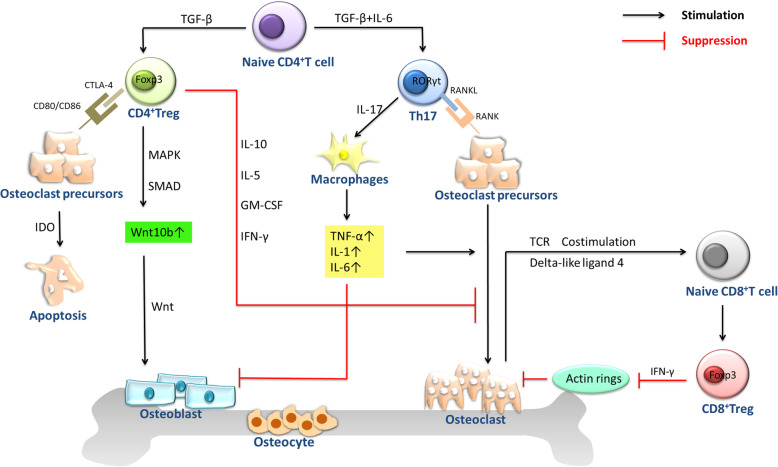Fig. 1.
CD4+Treg cells affect the bone include cell contact-dependent mechanisms and inhibitory cytokine inhibition mechanisms. CD4+Treg cells can promote the proliferation and differentiation of osteoblasts by secreting TGF-β and activating intracellular effectors such as MAPK and Smad-related proteins that induce mesenchymal stem cells to differentiate into osteoblasts and promote the proliferation and differentiation of these osteoblasts. CD8+Treg cells can inhibit the maturation and activity of osteoclasts by suppressing the formation of their actin rings. Simultaneously, in the bone marrow, the unique property of osteoclasts to induce CD8+Treg cells and the ability of CD8+Treg cells to regulate osteoclast function established a bi-directional regulatory loop between the two types of cells. Th17 cells express high level of RANKL on its surface, which binds to RANK on the surface of osteoclast precursor cells, promoting the development of osteoclast precursor cells to osteoclasts to accelerate bone absorption. Th17 cells also can secrete IL-17 which directly enhances the expression of RANKL in osteoclastogenesis-supporting cells

